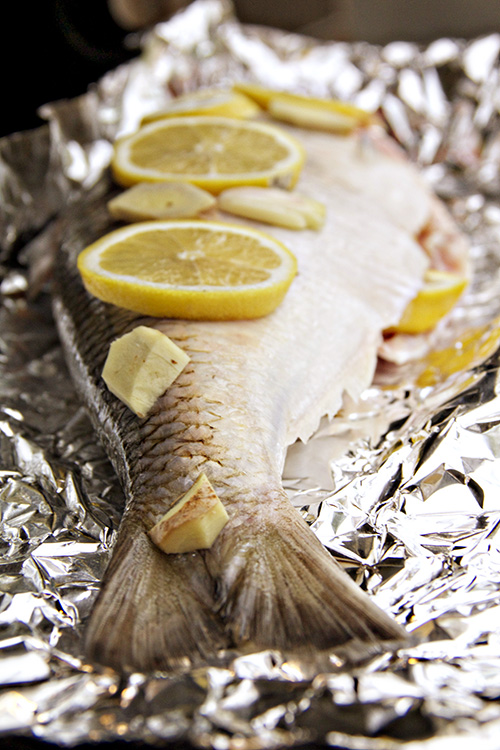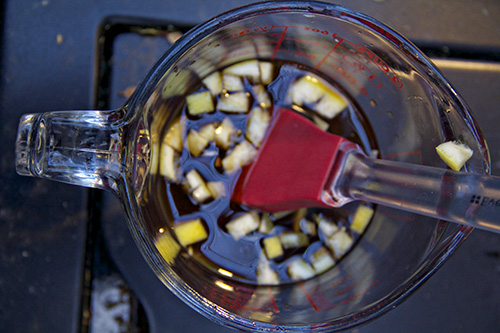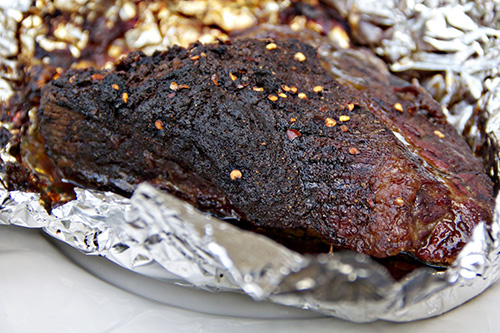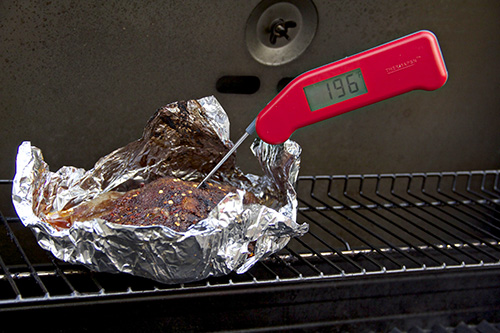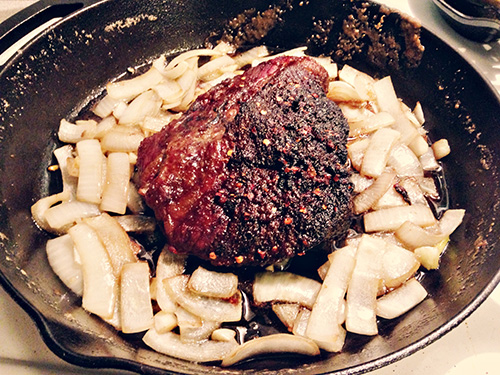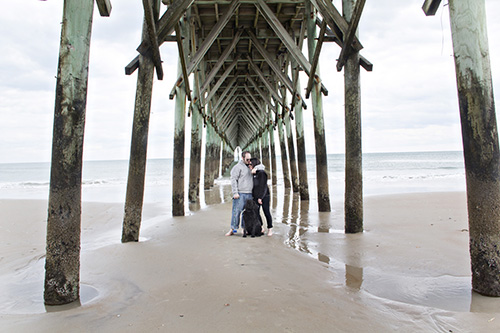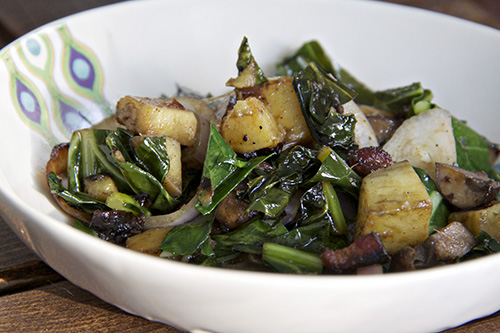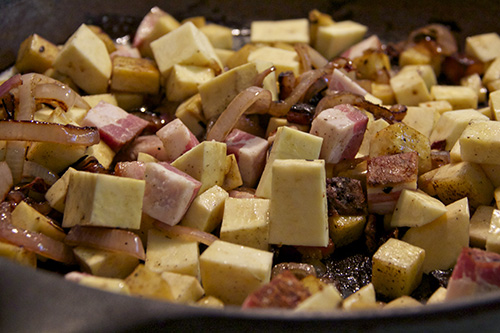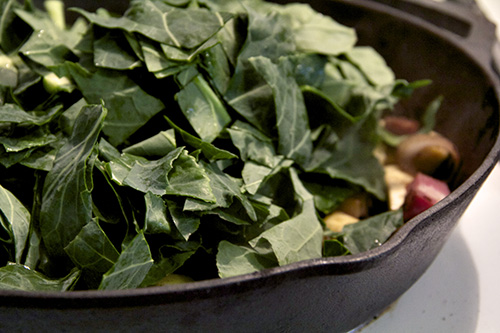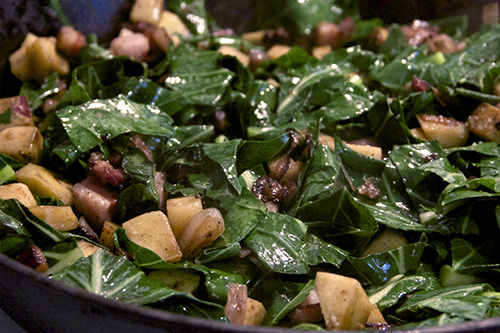3/100: Grilled Shad with Lemon & Chardonnay Sauce
 One of the many things that makes North Carolina an amazing state is it’s ever-changing terrain. From the Blue Ridge and Smokey Mountains in the Western corners of the state to the rolling piedmont to the barrier islands that hold the tales of pirates and colonists, this state has so much to offer. One of the reasons that a project like Tasting North Carolina appealed to me was because of the opportunity to explore (whether physically or virtually) the state that I call mine. What I know about North Carolina is so incredibly limited when compared to what there is available to learn, and I’m loving every part of diving in head first.
One of the many things that makes North Carolina an amazing state is it’s ever-changing terrain. From the Blue Ridge and Smokey Mountains in the Western corners of the state to the rolling piedmont to the barrier islands that hold the tales of pirates and colonists, this state has so much to offer. One of the reasons that a project like Tasting North Carolina appealed to me was because of the opportunity to explore (whether physically or virtually) the state that I call mine. What I know about North Carolina is so incredibly limited when compared to what there is available to learn, and I’m loving every part of diving in head first.
The first person that contacted me when I started putting feelers out for this project was Alvin Pack, the owner of Green Creek Winery. Green Creek is located in Columbus, the seat of Polk County, nestled in the Blue Ridge mountains just southeast of Asheville. Green Creek has been in business since 2005, but wine making has roots in this state deeper than whole hog barbeque. Starting with Sir Walter Raleigh’s discovery of the muscadine grape in Washington County, North Carolina boasts a 400 year wine making tradition, over 100 wineries, and a temperate enough climate that nearly all varieties of wine grape can grow somewhere within its borders.
Now I know, admittedly, very little about wine. I like spicy reds like Malbec, dislike heavily oaked Chardonnays, and can drink a sweet moscato like it’s water on a hot summer’s night. I know from wine tastings that my palate is not sophisticated enough to tell the difference between a $10 bottle and a $100 bottle. Like many consumers my decision to buy a particular wine is 75% price point and 25% label design. And even though I’ve been enjoying wine for years now I’m still familiarizing myself with what North Carolina has to offer. The state’s 100 wineries are scattered through many different regions, meaning you’re as likely to find a winery at the beach as you are driving through the mountains. Varieties range from scuppernog to the Red Chardonnay that Alvin has developed at Green Creek, and practically everywhere you visit you’ll have the opportunity to tour and taste (my favorite way to travel).
One of the recipes that Alvin suggested was a Lemon Chardonnay sauce for fish. I loved the idea, so while my mom was down last weekend visiting we picked up a whole shad, stuffed it, and threw it on the grill. Stuffed with lemon, ginger, and garlic the fish was flaky and full of flavor. I chose a shad caught in the Tar River just north of here because shad, like many ocean dwelling fish, migrate upstream to spawn this time of year. And while they probably don’t ever get as far as Polk County, I wanted to honor the flavor of the mountains with a locally caught fish. Alvin’s sauce called for Chardonnay, soy sauce, lemon juice, and ginger, which was the perfect compliment of flavors. We stuffed and grilled the fish whole and paired it with a lemon basmati rice, sprouted beans (for crunch and color), and a simple arugula salad. It was a wonderful way to spend a Saturday, visiting the beach, picking up a local fish on the way home, grilling it and having an easy and delicious meal with family. Everything that is wonderful about cooking and eating, all at once.
This post is part of the ongoing series, Tasting North Carolina. Read more about the project here.
Lemon Chardonnay Sauce for Fish
Adapted from Alvin Pack’s Green Creek Winery recipe
Sauce:
1/2 cup Chardonnay
3 tbsp soy sauce
Juice of 3 lemons
1 tbsp chopped lemon rind
3 cloves minced garlic
1 inch fresh ginger, minced
Dish:
1 4-5 pound white fish, such as shad (in the herring family), scaled & cleaned
1 lemon
5 cloves garlic
2 inches fresh ginger
Salt, pepper
Olive oil
Rinse your fish off and place it on a piece of tin foil larger than the fish. Stuff the cavity with half of your sliced lemon, sliced and peeled ginger, crushed garlic, salt, pepper, and olive oil. Top the fish with the remaining ingredients and fold the foil up over the edges. Place on the top rack of the grill and heat to 350.
In a bowl mix together chardonnay, soy sauce, lemon juice, rind, garlic, and ginger. Pour over fish occasionally, reserving enough to sauce the finished fish. Cook fish for 45-60 minutes or until the skin flakes off easily. Remove from the oven and serve it whole. Use a fork or a knife to open the fish up, peeling the skin back. Allow your guests to pick the meat out, and offer the sauce on the side to top the pulled meat.



